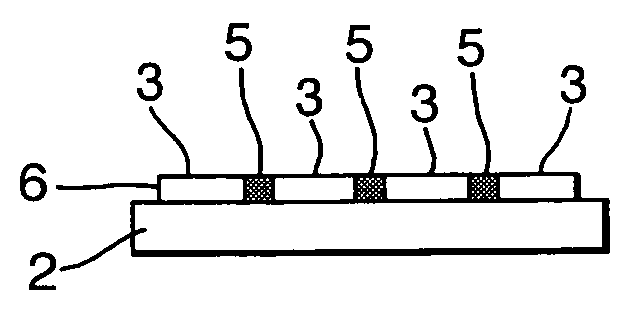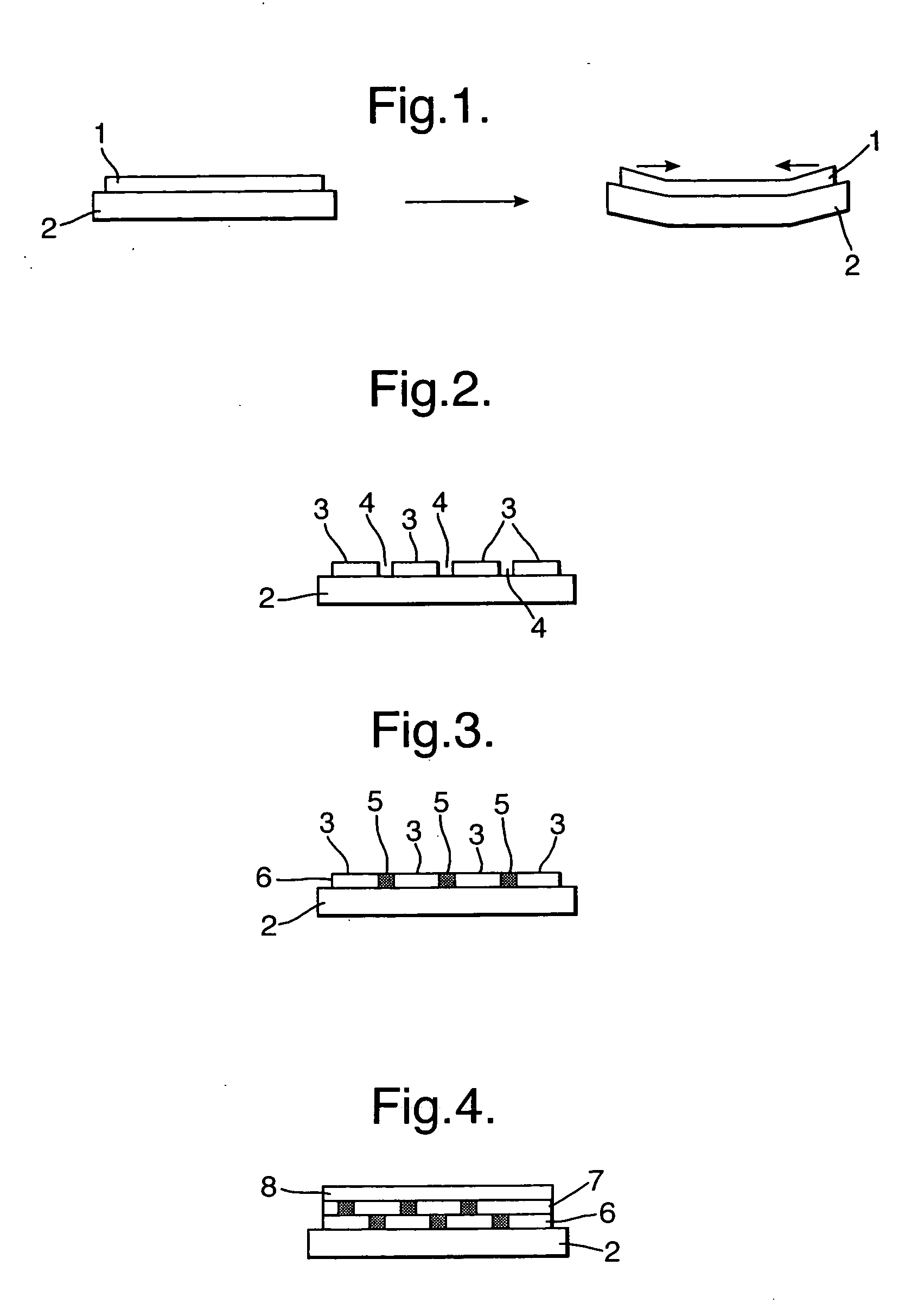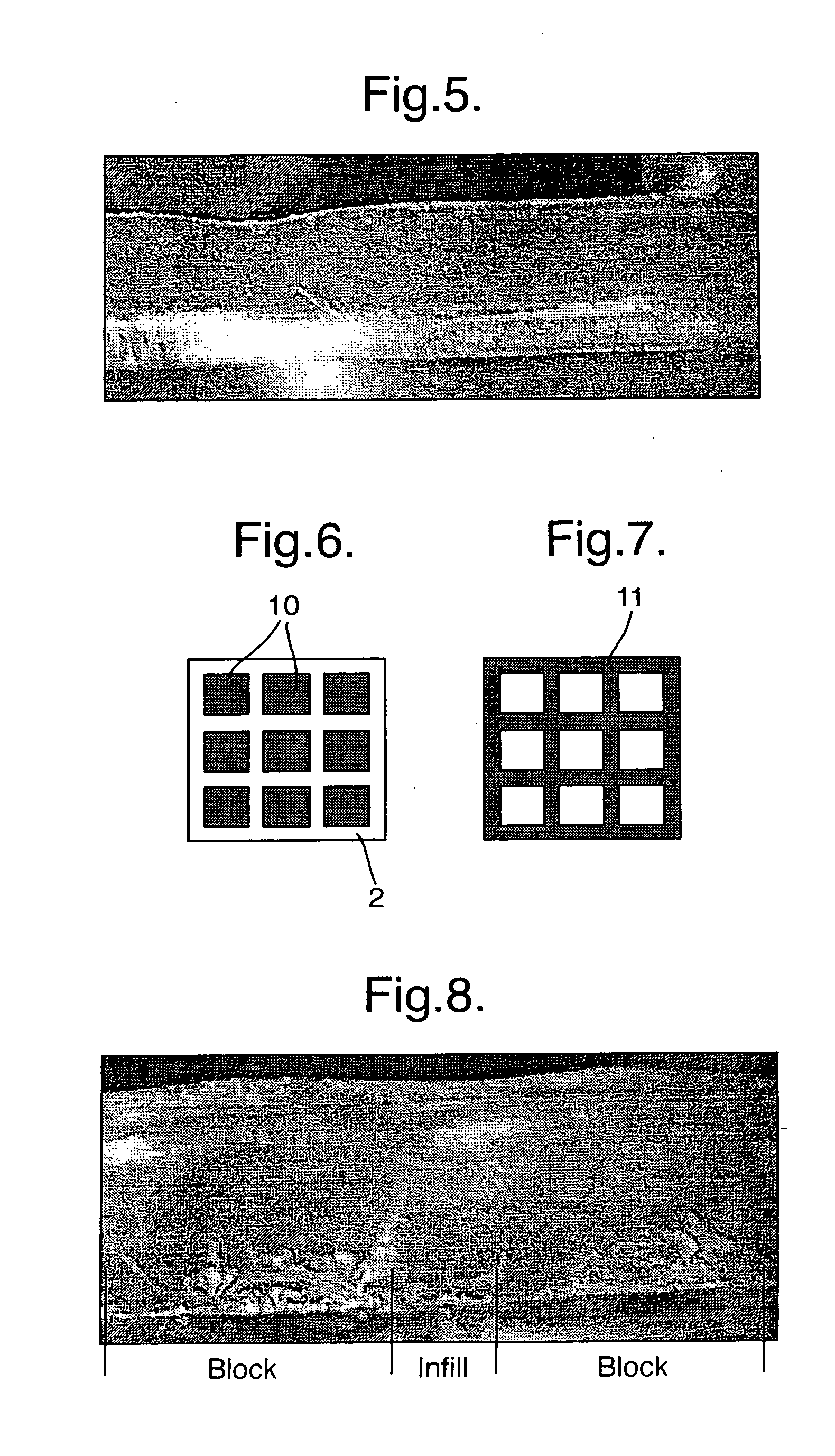Providing a surface layer or structure on a substrate
a technology of surface layer and substrate, applied in the direction of special surfaces, printing, duplicating/marking methods, etc., can solve the problems of cracking, cracking, etc., and achieve the effect of preventing substrate bowing and improving mechanical integrity of the deposited layer
- Summary
- Abstract
- Description
- Claims
- Application Information
AI Technical Summary
Benefits of technology
Problems solved by technology
Method used
Image
Examples
Embodiment Construction
[0052]FIG. 1 illustrates the problem which arises in a conventional process. In this process, a surface layer 1 is inkjet printed onto a substrate such as a mylar substrate 2. The surface layer 1 is then cured and this curing process introduces shrinkage of the deposited layer 1. This can induce stresses and strains into both that layer 1 and the substrate 2 which is clearly undesirable.
[0053] A first example of a method according to the invention is shown in FIGS. 2 and 3. As can be seen, in a first printing pass, a set of segments 3 are inkjet printed onto the substrate 2. They are then cured and because of their relatively small size, (typically individual ink drops) much smaller stresses will arise. The gaps 4 between the segments 3 are then filled with further segments 5 (FIG. 3) which are subsequently cured. The result is a continuous layer 6 in which the stress and strain problems of the prior art have been significantly reduced. In this example, a single second printing pas...
PUM
| Property | Measurement | Unit |
|---|---|---|
| size | aaaaa | aaaaa |
| diameter | aaaaa | aaaaa |
| diameter | aaaaa | aaaaa |
Abstract
Description
Claims
Application Information
 Login to View More
Login to View More - R&D
- Intellectual Property
- Life Sciences
- Materials
- Tech Scout
- Unparalleled Data Quality
- Higher Quality Content
- 60% Fewer Hallucinations
Browse by: Latest US Patents, China's latest patents, Technical Efficacy Thesaurus, Application Domain, Technology Topic, Popular Technical Reports.
© 2025 PatSnap. All rights reserved.Legal|Privacy policy|Modern Slavery Act Transparency Statement|Sitemap|About US| Contact US: help@patsnap.com



